A
Auto Express
Guest
Half a million dollars. That’s how much was on the line for the winner of the 2019 F1 eSports Series. That’s an eye-catching sum for a three-year-old competition.
But what, you may wonder, is F1 eSports? Put simply, it’s a live, online, video-game-based version of the real thing, with professional drivers – plus the occasional celebrity – competing on digital recreations of real racing circuits.
F1 eSports may only be a few years old, but professional gaming is nothing new. Action games like Call of Duty and Counterstrike have had competitive events (and lucrative prizes) for well over a decade. And the growing popularity of other virtual racing competitions like IndyCar iRacing and the 24 Hours of Le Mans Virtual prove Formula One isn’t the only racing series to translate well into the electronic world.
Even the all-encompassing issue of the coronavirus pandemic hasn’t dented the appeal of F1 eSports. In fact, with people forced to spend more and more time in their homes, and no real-world racing on show for months (F1 is set to return this weekend with the Austrian Grand Prix), the easily accessible world of eSports has positively thrived since the world went into lockdown.
Of course, being an online arena, the scope for video-game enthusiasts – as well as pro drivers – to compete in eSports is vast. Over 20 million people watched 66,000 gamers participate in the inaugural F1 eSports Series in 2017, with the eventual winner, British racer Brendon Leigh, crowned champion after an enthralling final race.
Leigh went on to win the series again the following year, and by this point interest in eSports had grown to such an extent that he was backed with decidedly real money from Formula One juggernaut Mercedes-AMG.
Williams, Renault Sport F1 Team and McLaren are among the other Formula One teams to enter the eSports arena, and Ferrari Driver Academy’s David Tonizza won the Series in 2019. With Williams Formula One driver George Russell winning this year’s F1 eSports competition, it’s clear digital racing is now taken seriously at the highest levels.
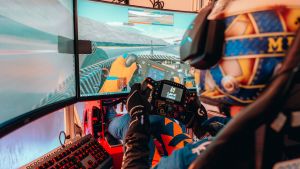
image
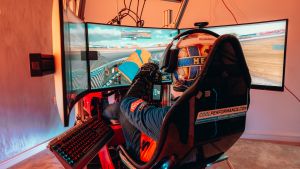
image

image
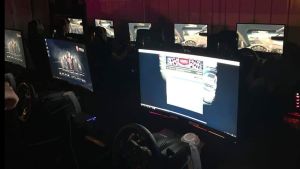
image
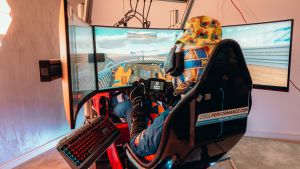
image

image
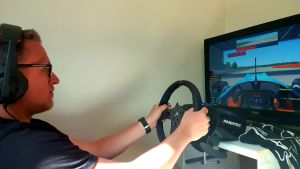
image
One of the biggest names to take part in F1 eSports is Brit Lando Norris, who began his F1 career in 2019 with McLaren, and quickly asserted himself as a serious talent. Norris is no stranger to finishing in the top 10 in GPs, nor out-qualifying his more experienced team-mate, Carlos Sainz Jr. His obvious talent and easy charm mean Norris’s fanbase is rapidly growing, and with the 2020 Formula One season delayed by coronavirus, Norris and other drivers turned to the F1 eSports Series instead.
Like many current drivers, Norris first experienced virtual racing when he was young, as he told Auto Express. “I’ve been playing on PlayStation and Gran Turismo for many years, since I was five years old, with a little steering wheel and pedals”, he said. “I never really made the transition to racing online with other people until I was around 11 years old, when I got a simulator for the first time. I loved it, driving on the simulator racing against other people, which is something I love virtually, or in real life.”
And with Formula One competition in the real world paused for several months, virtual racing has become a vital part of keeping Norris’s skills fresh.
“I find it really useful, and a lot of the characteristics of my driving translate well into a simulator. After certain races, if I’ve struggled, I can go on the simulator and keep trying. I’m able to then go back to the track and improve further. You can take the skills you’ve learnt and take them to the F1 car.”
While virtual gaming ‘rigs’ can give impressive levels of feedback, vibrating when a car is driven over kerbs, for example, Norris admits there remain some limitations.
“They’re getting closer, and the sims are becoming more realistic,” he said, “but there are two big things you miss in a simulator: G-force, and fear – they kind of go together in some ways. There isn’t a simulator out there to translate the G you pull in an F1. It’s helped keep me fresh in terms of driving cars, but nothing can come close to driving a Formula one car – not even an F2 car.”
And, while he acknowledges he will have less time for eSports racing once the real deal starts up again, Norris is clear he’s in the virtual arena for the long haul. “I feel I’ve helped eSports and become a promoter for it, because I’ve always said how much I love doing it,” he told us. “I think I’ll carry on, because it’s only going to get more popular.”
Dominic Sacco, from the British eSports Association, thinks professional drivers will only help raise the profile of virtual racing in the minds of fans. “The likes of Lando Norris, I think they’re helping normalise eSports. Their fans, who might not be experienced at eSports, might want to beat their time, and that’s where you can get some really talented players come through,” Sacco said.
And while Norris moved from the real Formula One grid to the virtual one, that journey can work the other way around, as Sacco explained. “Years ago, Sony did a competition with Gran Turismo [the GT Academy, run with Nissan] where they had to try and find the fastest driver in the game. They found one, and gave them a contract for a real-world team on a physical track. So there’s definitely a crossover there.”

image

image

image

image

image

image

image
For those of us who would rather watch than take part in online racing, accessing eSports could also get easier, as its growing popularity means a transition from computer to TV screens looks increasingly likely. “I like to think eSports and traditional sports can all work together. I don’t see a reason why they can’t all get along. TV broadcasters need to get on board, and maybe work around big events,” Sacco said.
But while eSports may be confined to online streaming for now, one thing definitely in its favour is that races are free to watch, unlike the paywalled F1 season.
Perhaps the biggest barrier virtual racing has to overcome, however, is prejudice, as Sacco explained: “eSports and racing games are shrugged off for not being the real thing. There’s no need to rubbish it, because it’s a growing industry. There are lots of jobs associated with it, and there’s money to be made if you’re a top driver.”
Sacco also thinks that the boost eSports has been given by the lockdown is likely to continue. “Once motorsport returns to normal there may be a dip in interest,” he said. “But I think if there is a dip then it’ll only be temporary, because eSports is becoming normalised. Many people will continue to watch because they may not have known it even existed beforehand. I think there’ll be more viewers in the long term, because people will be more accepting of it.”
Virtual racing: Every bit as controversial as the real thing?
Just as real Formula One drivers race in the virtual world, so controversies travel from offline to online. The biggest scandal seen in eSports this year concerns German Formula E driver Daniel Abt, who was sacked by his Audi paymasters after being caught using a professional ‘ringer’ to drive in his place in a virtual Formula E race. Lando Norris (right) has also found himself at the centre of a controversial incident, after being deliberately rammed off the track moments before he was about to win a virtual IndyCar race.
Editor-in-chief Steve Fowler thinks Formula E is the future of motorsport, not Formula 1...
Continue reading...
But what, you may wonder, is F1 eSports? Put simply, it’s a live, online, video-game-based version of the real thing, with professional drivers – plus the occasional celebrity – competing on digital recreations of real racing circuits.
F1 eSports may only be a few years old, but professional gaming is nothing new. Action games like Call of Duty and Counterstrike have had competitive events (and lucrative prizes) for well over a decade. And the growing popularity of other virtual racing competitions like IndyCar iRacing and the 24 Hours of Le Mans Virtual prove Formula One isn’t the only racing series to translate well into the electronic world.
Even the all-encompassing issue of the coronavirus pandemic hasn’t dented the appeal of F1 eSports. In fact, with people forced to spend more and more time in their homes, and no real-world racing on show for months (F1 is set to return this weekend with the Austrian Grand Prix), the easily accessible world of eSports has positively thrived since the world went into lockdown.
Of course, being an online arena, the scope for video-game enthusiasts – as well as pro drivers – to compete in eSports is vast. Over 20 million people watched 66,000 gamers participate in the inaugural F1 eSports Series in 2017, with the eventual winner, British racer Brendon Leigh, crowned champion after an enthralling final race.
Leigh went on to win the series again the following year, and by this point interest in eSports had grown to such an extent that he was backed with decidedly real money from Formula One juggernaut Mercedes-AMG.
Williams, Renault Sport F1 Team and McLaren are among the other Formula One teams to enter the eSports arena, and Ferrari Driver Academy’s David Tonizza won the Series in 2019. With Williams Formula One driver George Russell winning this year’s F1 eSports competition, it’s clear digital racing is now taken seriously at the highest levels.

image

image

image

image

image

image

image
One of the biggest names to take part in F1 eSports is Brit Lando Norris, who began his F1 career in 2019 with McLaren, and quickly asserted himself as a serious talent. Norris is no stranger to finishing in the top 10 in GPs, nor out-qualifying his more experienced team-mate, Carlos Sainz Jr. His obvious talent and easy charm mean Norris’s fanbase is rapidly growing, and with the 2020 Formula One season delayed by coronavirus, Norris and other drivers turned to the F1 eSports Series instead.
Like many current drivers, Norris first experienced virtual racing when he was young, as he told Auto Express. “I’ve been playing on PlayStation and Gran Turismo for many years, since I was five years old, with a little steering wheel and pedals”, he said. “I never really made the transition to racing online with other people until I was around 11 years old, when I got a simulator for the first time. I loved it, driving on the simulator racing against other people, which is something I love virtually, or in real life.”
And with Formula One competition in the real world paused for several months, virtual racing has become a vital part of keeping Norris’s skills fresh.
“I find it really useful, and a lot of the characteristics of my driving translate well into a simulator. After certain races, if I’ve struggled, I can go on the simulator and keep trying. I’m able to then go back to the track and improve further. You can take the skills you’ve learnt and take them to the F1 car.”
While virtual gaming ‘rigs’ can give impressive levels of feedback, vibrating when a car is driven over kerbs, for example, Norris admits there remain some limitations.
- SEE MORE Motorsport Moments
“They’re getting closer, and the sims are becoming more realistic,” he said, “but there are two big things you miss in a simulator: G-force, and fear – they kind of go together in some ways. There isn’t a simulator out there to translate the G you pull in an F1. It’s helped keep me fresh in terms of driving cars, but nothing can come close to driving a Formula one car – not even an F2 car.”
And, while he acknowledges he will have less time for eSports racing once the real deal starts up again, Norris is clear he’s in the virtual arena for the long haul. “I feel I’ve helped eSports and become a promoter for it, because I’ve always said how much I love doing it,” he told us. “I think I’ll carry on, because it’s only going to get more popular.”
Dominic Sacco, from the British eSports Association, thinks professional drivers will only help raise the profile of virtual racing in the minds of fans. “The likes of Lando Norris, I think they’re helping normalise eSports. Their fans, who might not be experienced at eSports, might want to beat their time, and that’s where you can get some really talented players come through,” Sacco said.
And while Norris moved from the real Formula One grid to the virtual one, that journey can work the other way around, as Sacco explained. “Years ago, Sony did a competition with Gran Turismo [the GT Academy, run with Nissan] where they had to try and find the fastest driver in the game. They found one, and gave them a contract for a real-world team on a physical track. So there’s definitely a crossover there.”

image

image

image

image

image

image

image
For those of us who would rather watch than take part in online racing, accessing eSports could also get easier, as its growing popularity means a transition from computer to TV screens looks increasingly likely. “I like to think eSports and traditional sports can all work together. I don’t see a reason why they can’t all get along. TV broadcasters need to get on board, and maybe work around big events,” Sacco said.
But while eSports may be confined to online streaming for now, one thing definitely in its favour is that races are free to watch, unlike the paywalled F1 season.
Perhaps the biggest barrier virtual racing has to overcome, however, is prejudice, as Sacco explained: “eSports and racing games are shrugged off for not being the real thing. There’s no need to rubbish it, because it’s a growing industry. There are lots of jobs associated with it, and there’s money to be made if you’re a top driver.”
Sacco also thinks that the boost eSports has been given by the lockdown is likely to continue. “Once motorsport returns to normal there may be a dip in interest,” he said. “But I think if there is a dip then it’ll only be temporary, because eSports is becoming normalised. Many people will continue to watch because they may not have known it even existed beforehand. I think there’ll be more viewers in the long term, because people will be more accepting of it.”
Virtual racing: Every bit as controversial as the real thing?
Just as real Formula One drivers race in the virtual world, so controversies travel from offline to online. The biggest scandal seen in eSports this year concerns German Formula E driver Daniel Abt, who was sacked by his Audi paymasters after being caught using a professional ‘ringer’ to drive in his place in a virtual Formula E race. Lando Norris (right) has also found himself at the centre of a controversial incident, after being deliberately rammed off the track moments before he was about to win a virtual IndyCar race.
Editor-in-chief Steve Fowler thinks Formula E is the future of motorsport, not Formula 1...
Continue reading...
